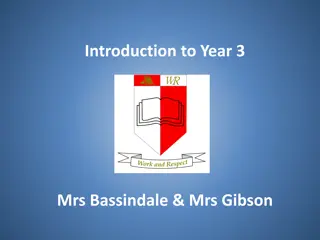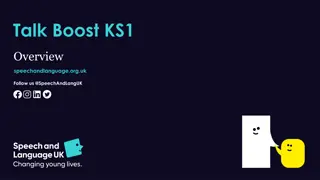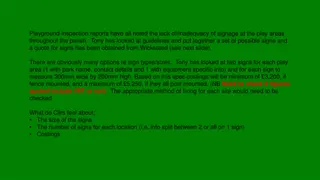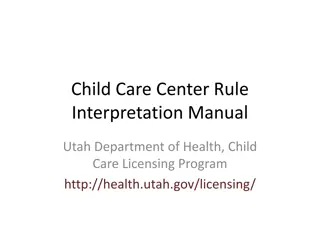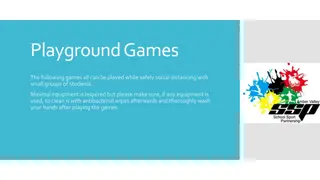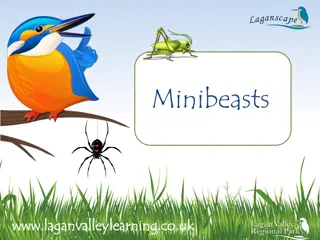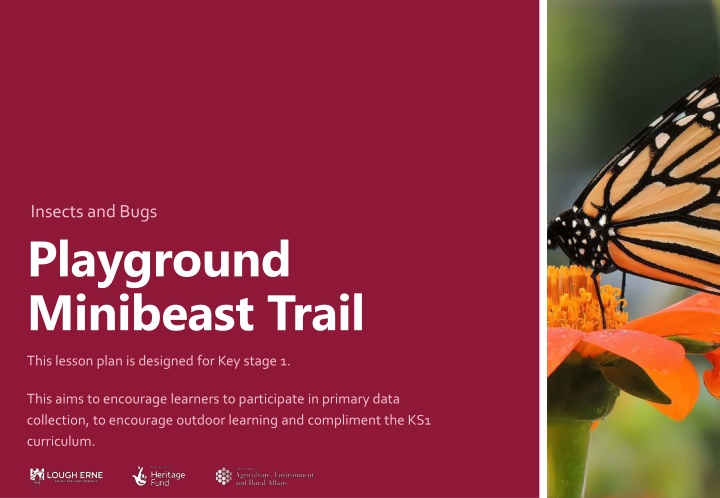
Exploring Minibeasts: Outdoor Learning Adventure
Engage Key Stage 1 learners in a hands-on minibeast exploration activity to promote outdoor learning and primary data collection. Discover fascinating minibeast facts, conduct a playground trail to identify different species, and use a Species Tally to record findings. Enhance students' understanding of insects, bugs, and their importance in the ecosystem. Partnered with educational resources.
Download Presentation

Please find below an Image/Link to download the presentation.
The content on the website is provided AS IS for your information and personal use only. It may not be sold, licensed, or shared on other websites without obtaining consent from the author. If you encounter any issues during the download, it is possible that the publisher has removed the file from their server.
You are allowed to download the files provided on this website for personal or commercial use, subject to the condition that they are used lawfully. All files are the property of their respective owners.
The content on the website is provided AS IS for your information and personal use only. It may not be sold, licensed, or shared on other websites without obtaining consent from the author.
E N D
Presentation Transcript
Insects and Bugs Playground Minibeast Trail This lesson plan is designed for Key stage 1. This aims to encourage learners to participate in primary data collection, to encourage outdoor learning and compliment the KS1 curriculum.
Minibeasts Facts Without bugs, there would be no flowers or food, for humans or animals.Around 80% of UK plants are pollinated by insects. The most common minibeasts found around schools are usually woodlice, bees, millipedes, centipedes, worms, slugs, snails, and spiders. A bug is only an insect if it has 6 legs! All insects are invertebrates (animals without a backbone). Our most common Lady Bird has 7 spots (called 7-spot ladybird). Interestingly, Woodlice are crustaceans,not insects, meaning they are more closely related to crabs and shrimps! 2
Activity: Playground Minibeasts Trail 1. Go outside and find as many species of Minibeasts as you can. 2. Record the amount of each species you locate using the 'Species Tally'. If you don't know a species name, you can consult the ID guide, before moving on. Note: It s a good idea to use a different tub for slimy bugs (like slugs/worms) and another for not so slimy bugs (like woodlice and spiders). 1. Your teacher will help you with this activity. 2. Once time is up, come together as a class and discuss your findings 3. When back in class and all species have been identified, log your data on the CEDaR website. 3
How to use a Species Tally: Record the species name on the left. Draw a line for every one of each species you find. Finally, total them on the right. 4
Our Partners Text Delivered through funding from: Description automatically generated with medium confidence Logo, company name Logo, company name Description automatically generated Description automatically generated Graphical user interface, text Description automatically generated Supported by our Partners: Logo, company name Description automatically generated Icon A picture containing logo Diagram Description automatically generated Description automatically generated Description automatically generated Created in Partnership with: 5





